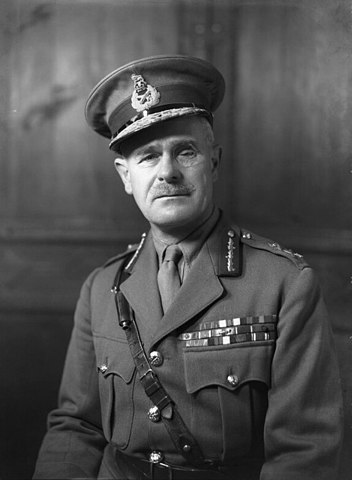Lord Wavell’s Vision: “The Significance of The Shimla Conference On June 25, 1945”

PREVIOUS KNOWLEDGE BACKGROUND:
i). These were the days of the Second World War. Gandhi launched “Civil Disobedience” and “Quit India Movement”.
During the tumultuous era of the Second World War, Gandhi ignited two monumental movements that reverberated through history: “Civil Disobedience” and the “Quit India Movement.” Through ‘Civil Disobedience,’ Gandhi advocated nonviolent resistance, urging the masses to peacefully defy unjust laws and policies imposed by the British colonial rule.
This movement echoed the spirit of passive resistance and encouraged Indians to assert their rights. Simultaneously, the ‘Quit India Movement’ was a clarion call for complete independence from British rule, marking a pivotal moment in India’s quest for freedom. Gandhi’s strategic use of nonviolent protest and civil disobedience during this global upheaval showcased the power of unity and peaceful resistance, leaving an indelible mark on India’s struggle for independence and inspiring similar movements worldwide.
ii). Gandhi asked all the people to boycott the courts and offices to pressure the Govt.
During India’s fight for independence, Gandhi, advocating nonviolent resistance, called upon the populace to boycott governmental institutions like courts and offices to press the British government. This strategic move aimed to disrupt the functioning of the administration and convey a powerful message of dissent against colonial rule. Gandhi believed that by refusing to participate in these institutions, the people could demonstrate their refusal to cooperate with unjust laws and policies, thus exerting pressure on the government while emphasizing the collective strength of the masses in their pursuit of freedom. This boycott served as a symbolic yet impactful method to challenge the authority of the colonial regime and bolster the resolve of the Indian population in their quest for self-rule.
iii). Lord Wavell was the British Viceroy. He called all the parties to decide on plans and the formation of the government.
During the era of British rule in India, Lord Wavell, serving as the Viceroy, convened a crucial meeting among various political parties to deliberate on plans and the formation of a government. This significant gathering aimed to address the evolving political landscape and chart a path towards India’s governance post-independence.
Lord Wavell’s initiative sought to bring together diverse perspectives and forge consensus among the parties, with the ultimate goal of establishing a cohesive and representative government for an independent India. This meeting held considerable significance in shaping the political discourse and laying the groundwork for the country’s transition to self-rule, reflecting a pivotal moment in India’s journey toward independence.
PROPOSAL FOR THE SHIMLA CONFERENCE:
i)The constitution of the future will be forged with the collective will of all political parties.
The shaping of India’s future constitution stands as a testament to the collaborative efforts and unified will of diverse political parties. With a collective vision for a free and democratic India, these parties actively contributed to the constitution-making process, ensuring that the document reflected the aspirations, values, and rights of the nation’s people. This inclusive approach to constitution-building emphasized consensus-building and accommodated varied ideologies, paving the way for a foundational document that encapsulated the hopes and dreams of a newly independent India. The collective will of these political entities laid the cornerstone for a constitution that continues to guide the nation’s governance and stands as a symbol of unity in diversity.
ii) The Viceroy’s Executive Council will include representatives from the Hindu and Muslim communities, who will play an important role.
During a pivotal phase of colonial India, the Viceroy’s decision to include representatives from both the Hindu and Muslim communities in the Executive Council held immense significance. This move aimed to foster inclusivity and representation of diverse religious identities within the governing body. By granting pivotal roles to members of both communities, the Viceroy sought to ensure that the voices and interests of Hindus and Muslims were heard and considered in the decision-making process.
iii) Every member of the Executive Council will be drawn from the sub-continent’s military leadership.
The decision to compose the entire Executive Council solely from the sub-continent’s military leadership held significant implications during that historical period. This approach represented a deliberate alignment of governance with military perspectives, emphasizing the paramount importance of defense and security in the decision-making process.
The decision to exclusively appoint members of the Executive Council from the military leadership of the subcontinent marked a significant shift in governance during a critical period. By drawing solely from the region’s military ranks, this move aimed to bring a unique perspective to the Executive Council, emphasizing a direct link between decision-making and the defense of the subcontinent. This decision reflected a strategic alignment between the political and military spheres, underscoring the importance of a unified leadership to navigate challenging times. Such a composition ensured that those with firsthand experience in defense matters played a pivotal role in shaping policies and strategies, highlighting the priority placed on security and defense concerns within the governance framework.
In the backdrop of the Quit India Movement and Mahatma Gandhi’s imprisonment in 1942, a pivotal moment in India’s struggle for independence, a series of events led to the historic Shimla Conference. Gandhi’s determined fast for 22 days drew international attention and mounting concern for his well-being, prompting his release on medical grounds.
Amidst communal tensions and political impasses, Viceroy Archibald Wavell recognized the need for a breakthrough and proposed a summit of influential leaders. However, his efforts faced resistance, with Winston Churchill’s reluctance to engage in Indian affairs. Eventually, in June 1945, the Shimla Conference was set in motion, with Wavell extending an invitation to key Indian figures, offering the promise of dominion status if the communal divide could be resolved.
This conference, fraught with political power plays and emotional complexities, played a critical role in shaping the future of a soon-to-be-independent India.

The Shimla Conference emerged as a beacon of hope in the struggle for Indian independence, arising from the ashes of Gandhi’s fast and mounting communal tensions. Despite Churchill’s reservations, Wavell’s determination to bridge the divide led to this historic gathering of influential leaders in June 1945.
At its core, this conference symbolized a chance for unity and self-governance, with emotional weight carried by the memory of Gandhi’s sacrifice and the daunting challenge of resolving communal tensions. It became a battleground of ideas, where political power dynamics and the dreams of a free India collided, setting the stage for the nation’s impending transformation.
CONCLUSION:
The Shimla Conference stands as a poignant chapter in India’s struggle for independence, woven with the threads of hope, sacrifice, and the quest for unity. Against the backdrop of mounting communal tensions and Churchill’s reservations, Lord Wavell’s steadfast determination to bridge divides brought forth this historic gathering in June 1945.
It became an arena where the aspirations for self-governance mingled with the echoes of Gandhi’s sacrifice, creating a charged atmosphere laden with the weight of India’s destiny. As influential leaders converged, the conference evolved into a crucible of ideologies and power struggles, setting the stage for the imminent transformation of a nation yearning for freedom. In its essence, the Shimla Conference remains a testament to the complexities of the time, encapsulating both the aspirations and challenges that would shape the course of India’s march towards independence.
FAQ:
- What constitutes the Viceroy’s Executive Council, and what roles and functions does it serve within the governance structure during colonial India?
- Can you provide insights into the ideology, key figures, and political significance of the Unionist Party during the pre-independence era in India?
- Were there instances where Lord Wavell faced challenges or disagreements in reaching a consensus with all political parties during his tenure as Viceroy?
- What were the primary reasons behind the opposition of the Unionist Party of Punjab to certain decisions or initiatives during that period?


2 comments